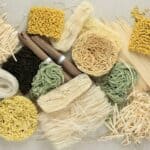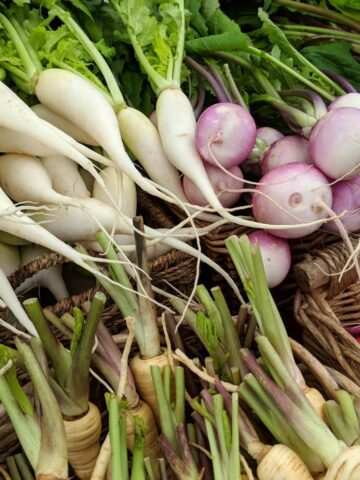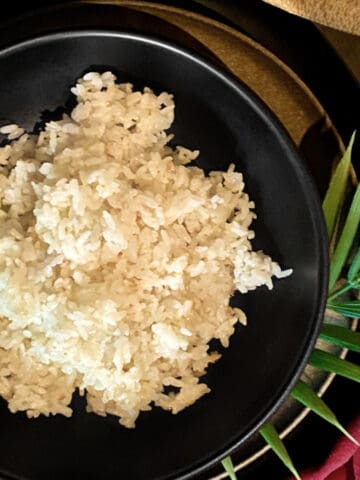First of all, do you know if squash is a fruit or a vegetable? If you said, squash is a fruit because it contains seeds and develops from the flowers of a plant, then you are right! Keep reading and I'll teach you ways to tell if squash is spoiled and has gone bad and ways to store them to preserve its shelf life.
By the way, if you said squash is a vegetable because they have roots, stems, or leaves, you are not alone. I know I know....not everyone agrees whether squash is a fruit or vegetable, just like, tomatoes, eggplants, avocados, and cucumbers all have seeds and are considered fruits. 🤷🏻♀️ So what do you say?
If you're looking for recipes that use squash, be sure to check out my Butternut Squash and Chickpea Curry, Sauteed Opo Squash with Shrimp, Chicken Tinola with Chayote, and Zucchini Blossom Naan Bread Pizza.

Types of Squash And When Are They In Season
There are two types of squash: summer squash and winter squash.
- Summer Squash - is harvested through the summer. Zucchini and yellow squash fall in this category and they have tender skin. And because of such, they have a short shelf life and should be consumed within five to seven days for optimum freshness.
- Winter Squash - is harvested from late summer and most times to autumn yet at times even early winter! The common ones like acorn squash and butternut squash, are considered winter squash and have thick skin. Since they have thicker skin, they tend to keep longer and can be stored for quite a while.
You can pretty much find the most common variety of squash in your local market or grocery store all year long.
Although, my favorite is getting fresh squash at a farmers' market because then I know I'm getting the freshest and the best quality and variety.

Signs Of Spoilage
You can tell if a squash has gone bad by looking at the skin, flesh, and seeds of a squash. Here are sure ways to know if squash is spoiled:
- Texture - the easiest way to check if squash has gone bad is by the skin of the fruit. Fresh squash is firm to the touch and will have a thumping sound if you slightly tap on it. A squash with soft spots and is soft to the touch, is a sign that the squash has gone bad. And if it starts to leak fluid, that's a sure sign that the squash is spoiled. Likewise, if the flesh and seeds of the fruit are mushy and slimy, that's a clear sign that it shouldn't be eaten.
- Color - the outer skin of the squash is a quick way to check for any sign of spoilage. Squash that has gone bad will have rotten spots that can be characterized as any brown spots or black spots on parts of the squash or the entire squash itself. If you see any cuts or blemishes and dark spots, the squash is spoiled.
- Signs of Mold - if you see mold even in small amounts, it's a clear sign that the squash is spoiled. Discard the squash promptly.
- Taste - the flesh of the squash will have a fresh and wholesome flavor. Any off or bitter flavor means the squash has gone bad.
- Smell - squash is spoiled if it has an off-putting bad and sour smell.
Ways To Store
The first thing to note is that once fresh vegetables have been picked or harvested, they start to lose their nutrient value. So it is always a good idea to prepare the squash and consume it as soon as you've purchased it.
However, if you will not be using the squash right away, there are simple steps you can take for storage and food safety so you can extend its shelf life.
- On the countertop - if you will not be eating it right away, the best way to store the whole squash (not peeled nor sliced) is to keep it stored in a cool and dark place. You can also store the squash on the countertop at room temperature and that will keep the squash in good condition while also preserving it for the best flavor. I have done this with harder squash like acorn squash, butternut squash, spaghetti squash, and other winter squash with great success, and they stayed fresh for a long time like two to three months. Keep it away from direct sunlight though to keep the squash from going bad.
- In the refrigerator - if you want to prepare a squash ahead of time, you can peel and slice it to the desired size and store it in an airtight container or sealed plastic bag. You can store squash raw or cooked this way in the fridge for up to five days.
- In the freezer - another way to store squash is by freezing them. Peel and slice the squash into smaller portion and place them in a single layer on a cookie sheet and freeze for about 30 minutes. After which, place all the frozen pieces, in a sealed container or freezer bags and store them in the freezer for up to three months. Freezing raw squash rather than cooked will yield a better ingredient to add to any recipe.
In all cases, the best thing to remember is to not wash the skin of the squash until you're ready to use it to keep it from spoiling. The moisture from the water will induce bacterial growth so be sure to keep the squash dry and store it in a dry place.
Recipes You May Like
Looking for other recipes like this? Try these:
Perfect Pairing
These are my favorite dishes to serve with Squash:
Recipes Using Squash
I have made a variety of dishes here on my blog that uses different types of squash like butternut, chayote, zucchini, and opo. Be sure to check them out for inspiration!































Comments
No Comments